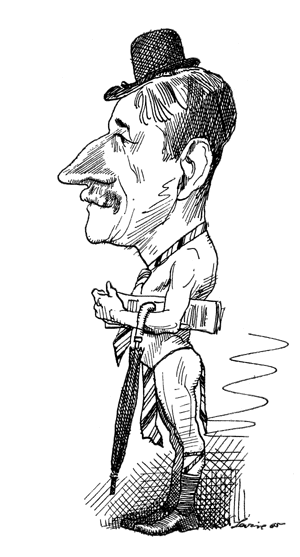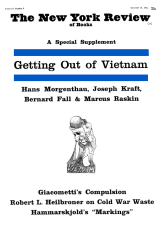Fitzroy Richard Somerset, 4th Baron Raglan, born 1885, died 1964, was great-grandson of the ill-fated British Commander-in-Chief in the Crimean War and his tall, lanky, cavalry-officer appearance had such a strong flavor of the Charge of the Light Brigade and of Don Quixote battling with windmills that it was hard to take his very considerable scholarship at all seriously. He stands out as the last survivor of a notable but now extinct species, the English amateur gentleman anthropologist. He happened to live in an age when professionalism had become the dominant value in every branch of academic life and perhaps his work has been undervalued in consequence.
One characteristic of significant amateur scholars is that they tend to flog their good ideas to death without ever bothering to see where the idea might lead to if presented in a slightly different shape. This was notably true of Raglan. His particular obsession was that almost every imaginable aspect of culture is a survival from some ancient form of ritual. The source of this notion is rather complex. It ties in with Jane Harrison’s thesis that myth originates as a description of ritual drama rather than the other way around, and it also has hangover elements from the simple-minded nineteenth-century doctrine that all mysterious oddities of human custom are fully explained once you show that what now seems quite absurd would have made perfect sense in a different context, at a different time (evolutionism), or at a different place (diffusionism). It cannot be said that this bee in Raglan’s bonnet ever did very much to further the progress of anthropological understanding, yet in his own peculiar way he was a very perceptive man who often got much closer to the heart of things than his more orthodox and more orderly-minded contemporaries. He possessed a necessary (though not sufficient) element of true genius in that he would repeatedly ask awkward questions about matters which everyone else took entirely for granted.
For example, the central question underlying this present posthumous work is: “Why do men live in houses?” Most of us would suppose that the answer was simple—“to keep themselves dry and warm.” Not a bit of it, says Raglan. Study the facts closely and you will quickly be persuaded that any such answer is naive. On the contrary, the facts (as observed by Raglan’s eyes) show clearly that the human house is really a temple with the marriage bed at the focus—the house is the ritual embodiment of the sacrament of marriage, which is the foundation stone of kinship and the family and hence of society itself. Fanciful? Ridiculous? Well yes, well no. There may be wisdom in such fantasy. Generations of social anthropologists have kept returning to this same theme; incest, exogamy, consanguinity, affinity, these are the key concepts around which human beings everywhere have built their societies, these are the fundamental girders out of which the elementary structures of kinship are put together; and if that is so, then surely the immediate material context of this fundamental source of sacredness and metaphysical ideas—the marriage bed itself—deserves a good deal more thought and attention than any social theorist has ever previously devoted to it.
Or consider an even more rudimentary problem. Generally speaking most primitive housing is constructed on either a circular or a rectangular ground plan. There has been plenty of learned discussion as to why and when one type should supersede the other but no one before Lord Raglan seems to have asked the basic question: Why round or rectangular at all? Pure geometrical forms of this kind do not occur in nature so why should primitive man resort to Euclidian geometry when he comes to design a house? Here is a problem of la pensée sauvage which even Lévi-Strauss has never thought of. Raglan’s thesis that man would only use geometrical ground forms in imitation of cosmological ideas must be rated “unproven” to say the least! Yet the question is sensible enough. Why circles? Why rectangles? Personally I have no idea, but Raglan has convinced me that ordinary “common-sense” explanations don’t hold up at all.
Raglan’s wisdom has always been of this kind, asking the right questions but not offering sensible answers. In 1933 for example he pertinently asked: Why do we ever believe ia oral tradition? His own answer was total negation. Traditional narrative is always an account of a ritual drama and therefore traditional history is never historical in a strict sense. Carried to this extreme the argument is preposterous, yet Raglan’s simpler thesis, that traditional history is very unlikely to be true and that therefore it is futile to imagine, for example, that you can learn something about the history of Troy by studying Homer, is almost certainly valid. No one agreed with him at the time and not everyone agrees with him now. But they will in the end; ask Moses Finley!
Advertisement
Raglan’s best book was The Hero, published in 1936, which carried the argument about the non-historicity of legend a good deal further. Here again the argument grows out of an absurdly simple question: What is it about Oedipus, Perseus, Moses, Siegfried, King Arthur, Robin Hood, and a dozen others that leads us to lump them all together as “heroes”? In answer Raglan demonstrates that the stories associated with these various legendary characters are all morphologically the same—the same sets of dramatis personae and the same incidents recur again and again with only minor modifications. Raglan was not the first to recognize this fact. The Russian folklorist Vladimir Propp had published a much more systematic analysis in 1928 and similar ideas are implicit in even the earliest writings of Georges Dumezil—though it is extremely improbable that Raglan had ever heard of either. But Raglan did not follow up his insight. He did not enquire more closely into the nature of the identity or the difference that may associate two stories of similar structure. He simply explained the observed phenomenon away by means of his a priori dogma. The stories are the same because they are all descriptions of the same perennial and universal ritual drama. And Raglan did not mean an archetypal fantasy as Freud or Jung might have done but an actual real life dramatic performance, the details and purpose of which are left curiously vague. I think we must rate any such idea as poppycock, though it is in line with the arguments of the so-called “Myth and Ritual” school whose doctrines had considerable vogue around that time. This movement has faded away, but was recently provided with an epitaph in S. H. Hooke (ed.), Myth, Ritual and Kingship (Oxford, 1958).
Insofar as Raglan was associated with this group of writers, he was not the most perspicacious and his influence was not very great. All I am saying is that, as early as 1936, Raglan, in his haphazard and amateurish way, was demonstrating some interesting and important facts about the structural transformability of myths and folktales and that The Hero, for all its obvious weaknesses, might very well have been the starting point for a seriously professional analysis of the structure of myth. In fact no one took the slightest notice of this “structuralist” aspect of his argument and it was nearly twenty years before Lévi-Strauss started afresh and made the whole subject academically respectable. Perhaps there is a moral in this.
The Temple and the House is a quaint and entertaining book to which no serious scholar is likely to devote even a moment’s attention. But the professionals should take note of the record; amateur though he might be, Raglan was nothing like the fool that he looked.
This Issue
September 16, 1965




